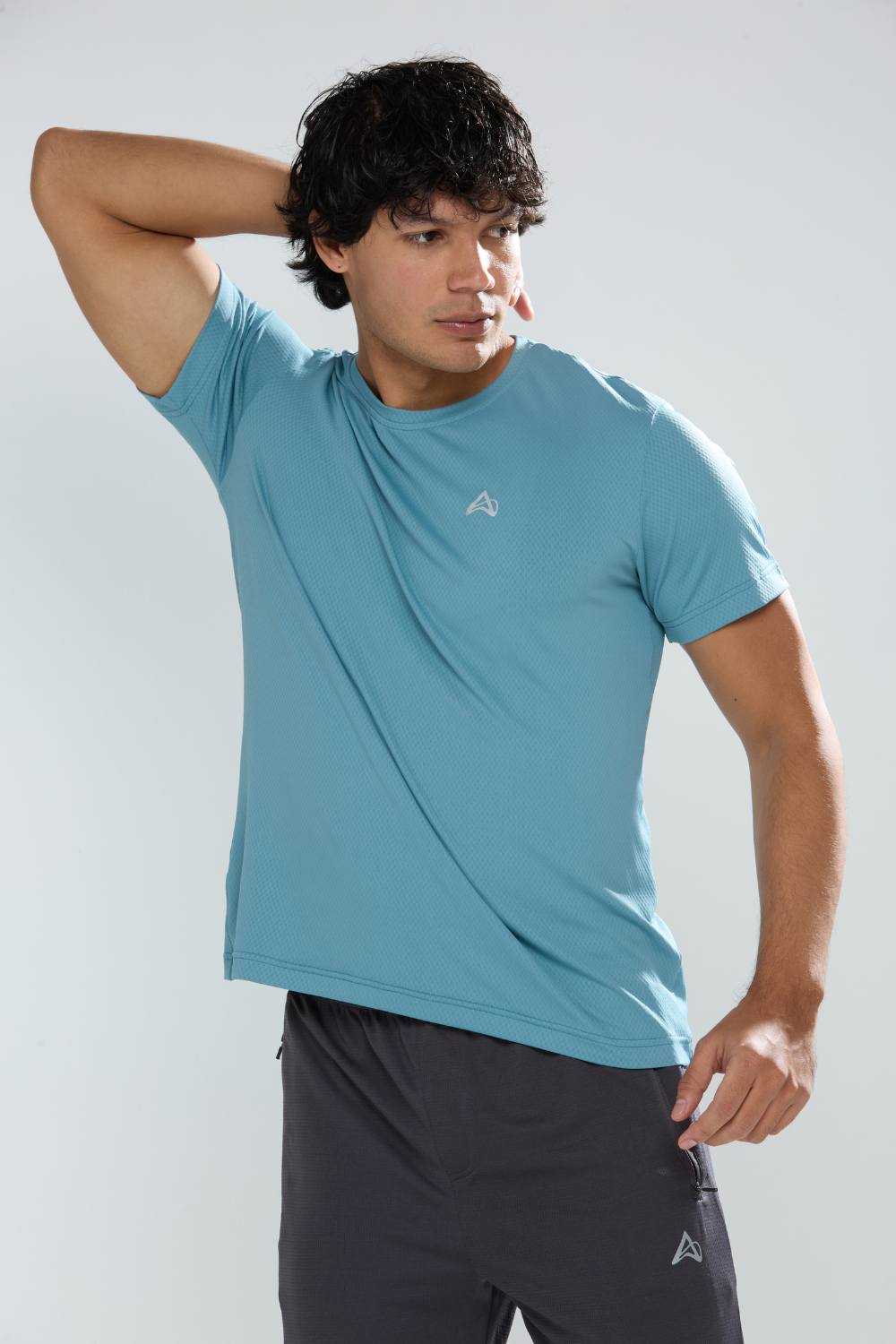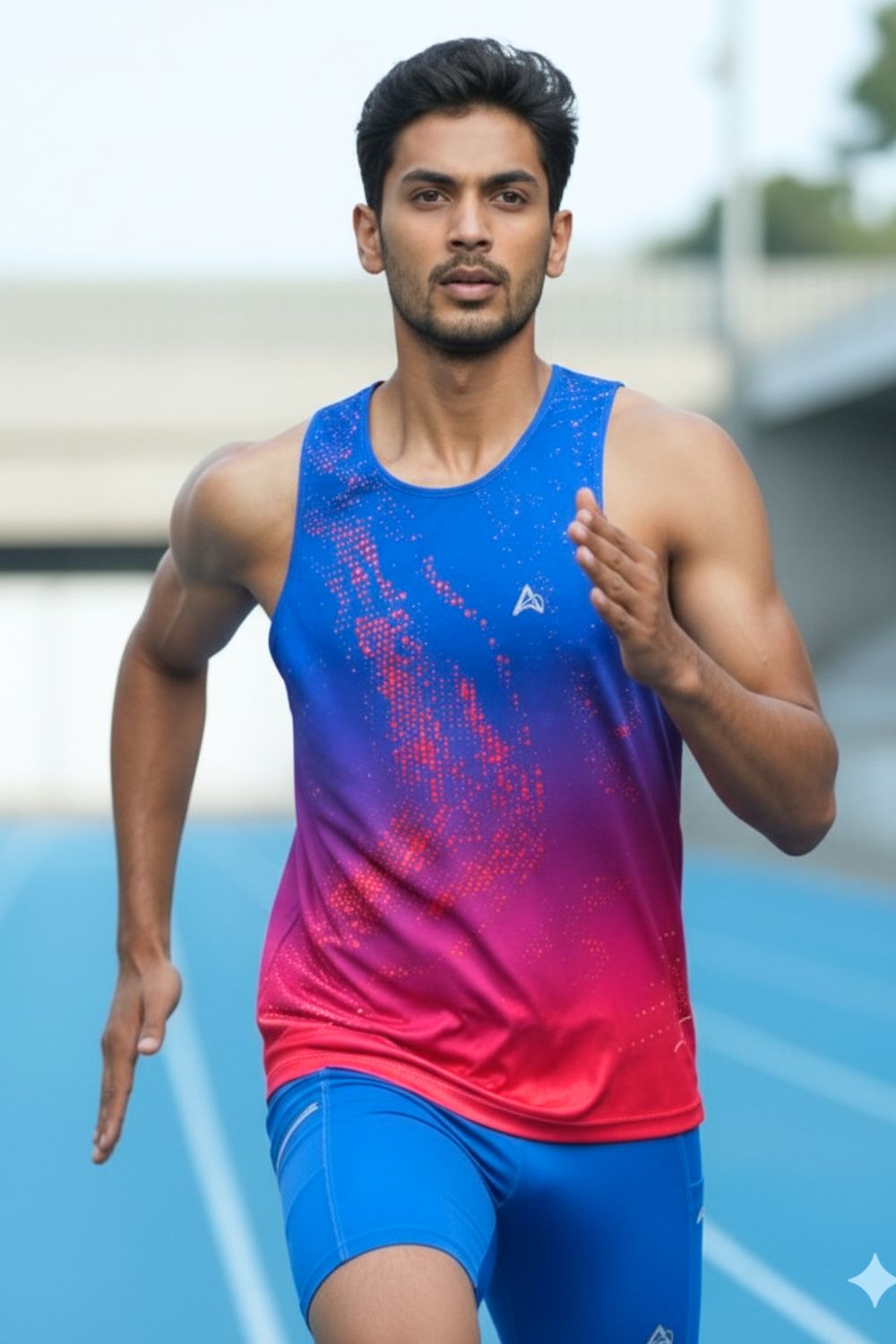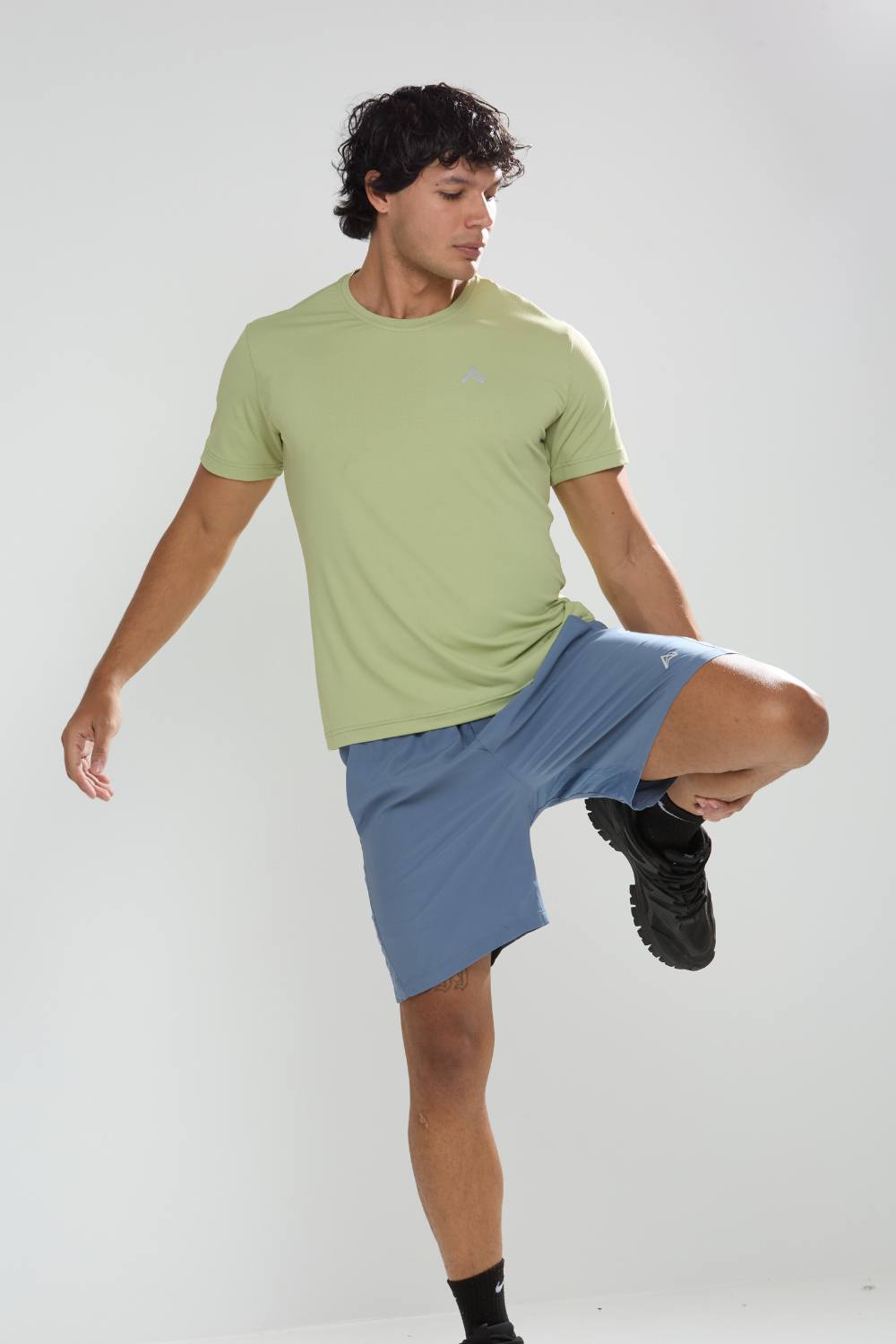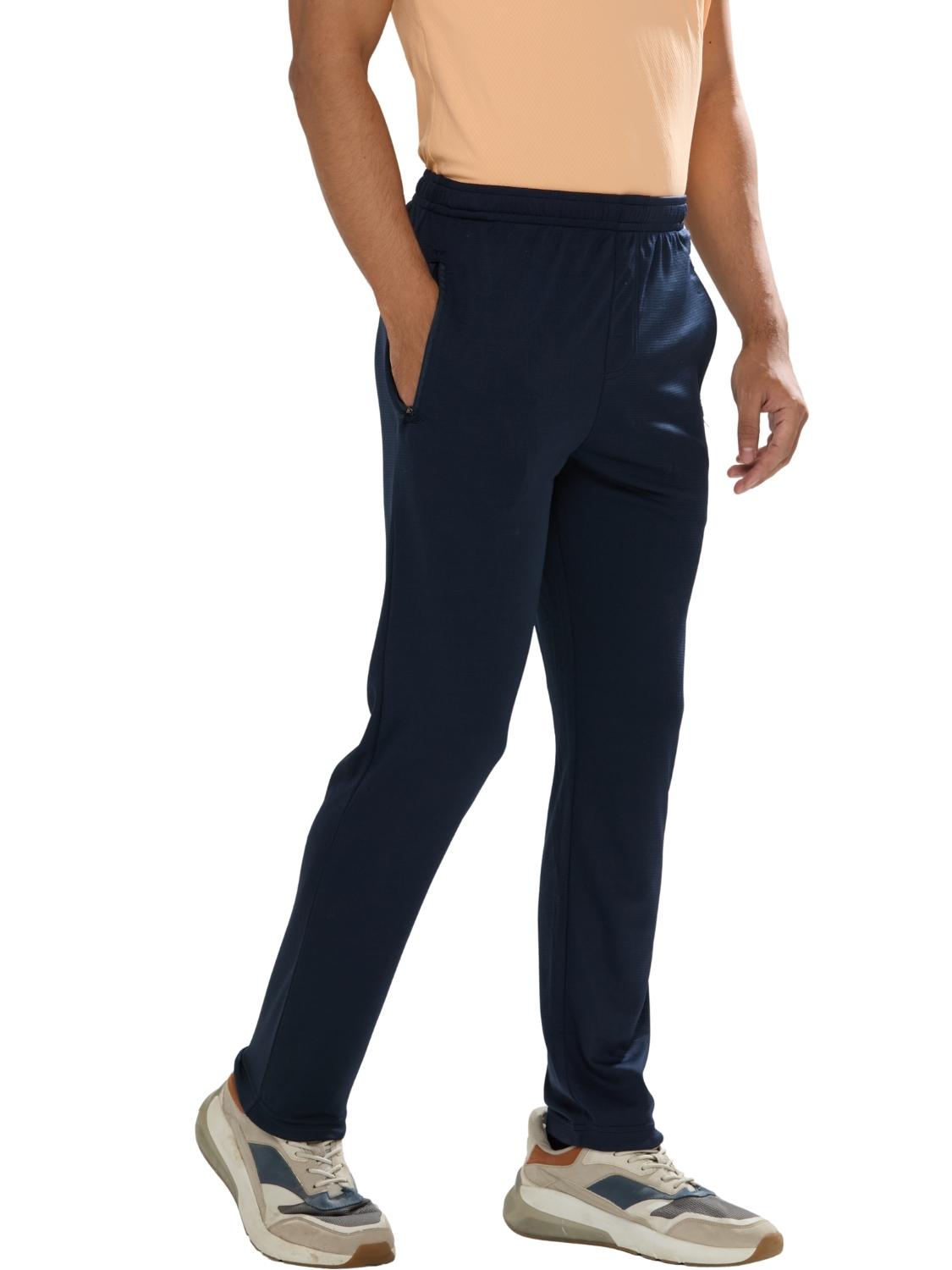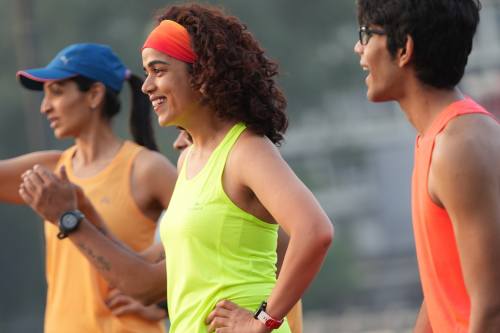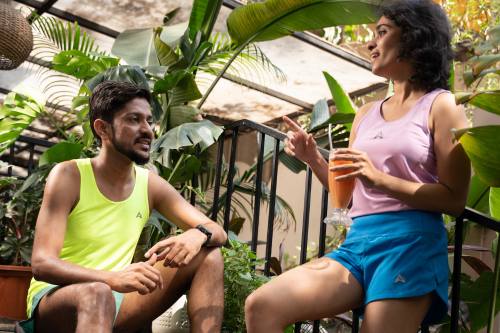Quick Listen:
Imagine the first light of dawn piercing through Mumbai's skyline, the air already heavy with the promise of another sweltering day. You step out, sneakers hitting the uneven sidewalks amid the hum of early traffic, and almost immediately, the sweat begins relentless, unforgiving. For urban joggers in India's throbbing metropolises, from Hyderabad's tech corridors to Delhi's dusty avenues, this is the daily gauntlet. Yet amid the haze and heat, a subtle shift is underway in the world of activewear. Moisture-wicking fabrics aren't mere accessories; they're engineered allies, transforming punishing runs into empowered pursuits. These textiles pull perspiration away from the skin with precision, evaporating it swiftly to deliver a cooling embrace that keeps runners in command. In an era where fitness meets urban grit, understanding this technology isn't optional it's essential for anyone serious about conquering the concrete jungle.
Tired of gear that slows you down? Chafing, soggy fabrics, and missing pockets kill your run's momentum. At Aguante, we're runners who get it. Our high-performance activewear features moisture-wicking fabrics, ergonomic designs, and smart storage to keep you focused. Shop Now!
Beat the Heat: How Moisture-Wicking Fabrics Empower Urban Joggers
Engineered for the relentless demands of city running in India, these advanced fabrics deliver unmatched breathability and performance, ensuring joggers remain dry, focused, and resilient against the tropical onslaught.
In the heart of Pune's bustling streets, where morning runs weave through honking autorickshaws and rising thermometers, the choice of attire can make or break a session. Temperatures routinely soar past 35 degrees Celsius, humidity wrapping around you like a damp shroud, turning every stride into a test of willpower. This is where moisture-wicking fabrics assert their dominance. Far from the absorbent but clammy cotton of yesteryear, these modern marvels crafted from synthetics like polyester and nylon, or blended with naturals such as merino wool channel sweat outward to the fabric's exterior. There, it disperses into vapor, pulling heat away from your body in a process that's as efficient as it is intuitive. For runners dodging potholes in Navi Mumbai or powering up inclines in Bangalore's undulating parks, this isn't luxury; it's logistics, enabling sustained effort without the drag of saturation.
Delve into the science, and the ingenuity sharpens. Pioneering work at Stanford University unveiled the integrated cooling i-Cool textile, a breakthrough that fuses heat-conductive pathways with dedicated sweat-transport channels. This design doesn't just wick; it orchestrates evaporation at superior rates, outperforming conventional materials in high-sweat scenarios. On an artificial skin simulator mimicking human exertion, it achieved a notable 2.8 degrees Celsius drop in surface temperature versus standard cotton, while curbing dehydration to under one-third the volume critical metrics that translate directly to fewer cramps and sharper focus on Ahmedabad's sun-baked trails. Such validations underscore a broader truth: these fabrics mitigate not only discomfort but the physiological toll of urban endurance, from electrolyte imbalances to outright exhaustion.
Emerging Trends in Activewear Technology
The activewear landscape pulses with momentum, propelled by textiles that transcend basic functionality. At the forefront, synthetic powerhouses like polyester and nylon command attention for their rapid-dry attributes and airy permeability, forming the backbone of gear that thrives in adversity. Yet innovation doesn't stop there enter natural hybrids, where merino wool's antimicrobial edge combats post-run odors, and bamboo's inherent softness adds a layer of tactile mercy. These aren't isolated traits; they coalesce to fortify against UV exposure, stabilize core temperatures, and sustain freshness across grueling miles. In a sector brimming with choices, the standouts master the alchemy of swift moisture dispersal and enduring wearability, setting new benchmarks for what runners can expect from their kit.
For Indian urban athletes, this evolution resonates deeply through localized ingenuity. Aguante stands as a testament, eschewing off-the-shelf imports for apparel forged in the fires of subcontinental realities scorching afternoons in Gurugram, monsoon-soaked sprints in Surat. Their fabrics aren't afterthoughts; they're precision-tuned to ventilate amid Delhi's smog-choked haze or evaporate furiously during Hyderabad's humid hazes. Consider the obsessive refinements: pockets engineered to cradle essentials without a whisper of bounce, seamless inner linings that banish chafing's fiery protest, and subtle reflective piping that turns twilight joggers into beacons against Mumbai's chaotic dusk. This isn't mass-produced uniformity; it's activewear distilled from authentic Indian runs over jagged pavements, through erratic monsoons delivering fluid motion, unyielding dryness, and laser-sharp concentration. While global giants hike prices on foreign blueprints, Aguante fuses homegrown insight with world-class execution, making elite performance accessible to every city strider.
Peer into the data, and the trajectory affirms this surge. The global moisture-wicking fabrics market, clocking in at $2.82 billion in 2024, is set to climb to $3.01 billion by 2025 a robust 6.7 percent compound annual growth rate before reaching $3.86 billion in 2029 at a sustained 6.4 percent CAGR. Parallelly, the cooling fabrics sector mirrors this vigor, expanding from $2.70 billion this year to $4.08 billion by 2030, driven by a 7.1 percent CAGR. What fuels this ascent? A confluence of urban wellness revolutions in hubs like Pune and Bangalore, where sedentary routines yield to vigorous evening loops. Athletes aren't merely logging kilometers; they're evading thermal overload, and these textiles emerge as indispensable shields. Healthcare's embrace cooling medical garb for heat-vulnerable patients and industrial necessities, like heat-stress-proof uniforms for factory crews, amplify the demand. E-commerce's sprawl further democratizes access, linking innovators to aspirants in Ahmedabad's high-rises and beyond.
Layer in longer-term vistas, and the picture sharpens further. Projections from market analysts paint the moisture-wicking fabrics arena ballooning from $1.0 billion in 2023 to $2.4 billion by 2034, propelled by an 8.0 percent CAGR through the coming decade. Polyester's reign persists, buoyed by its cost-effectiveness and prowess in performance wear, while Asia-Pacific's dominance India at the vanguard stems from an insatiable appetite for breathable, cooling solutions in sport and daily garb. This isn't abstract economics; it's the pulse of a nation lacing up, demanding gear that amplifies rather than impedes.
Real-World Applications
Shift to the asphalt, and the theory ignites. In Gurugram's manicured greens, where elite professionals carve out pre-commute miles, testimonials abound on the transformative edge of wicking tech. Tune into Instagram's vibrant ecosystem profiles like Coach Shanth Koushik, the barefoot evangelist navigating Bangalore's baked boulevards reveal unfiltered grit. His reels capture humid dawn drills, underscoring how ventilated tops sustain coaching vigor without the wilt of drenched layers. Echoing this, Coach Amit Kumar chronicles Mumbai's pack runs, where fabrics avert seam-splitting sweat traps, letting groups sync strides sans distraction.
Beyond mentors, the chorus swells from grassroots voices. Runholic Dev's feeds from Pune's periphery detail extended hauls unmarred by adhesive cling, while Fit Kaur spotlights nocturnal Navi Mumbai jaunts, illuminated by gear's subtle glow for hazard-free pacing. These narratives raw, glistening with authenticity illuminate wicking's bridge from intent to achievement. In Hyderabad's innovation hubs, where dawn dodges peak-hour frenzy, amplified evaporation yields streamlined routes, trimming halts and inflating records. Across platforms like Facebook and YouTube, similar sagas unfold: unscripted clips of Surat striders surging through sprays, Ahmedabad adventurers acing inclines unburdened.
Aguante's arsenal elevates these tales with runner-centric finesse. Envision shorts cinching gels and gadgets sans shift, linings thwarting rub-induced retreats, silhouettes sculpted by local testers not distant dummies. Infuse twilight-visible accents for Delhi's dimmer districts, and the ensemble rivals the athlete's tenacity. These elements transmute drudgery into delight, embedding safety and savvy into every seam.
Key Challenges, Limitations, or Risks
Yet supremacy invites scrutiny; no fabric defies nature's extremes unscathed. India's metropolitan maelstroms Delhi's 45-degree spikes, Mumbai's vaporous veils magnify perils: stealthy desiccation outpacing sips, thermal fatigue ambushing in shaded nooks, perspiration-fueled flares halting progress. Pinnacle textiles extend grace periods, not immunities; overextend sans fluids, and even elite wickers saturate. Biological imperatives persist, demanding respect alongside reliance.
Compounding this, conformity pitfalls plague imports: overseas molds dismiss India's somatic spectrum and secretion signatures. Loose silhouettes snare warmth, rigid joins ignite humid hives. Aguante counters assertively, championing aeration and bespoke contours that embrace sans encumber vital, as adversarial attire aborts endeavors quickest. This ethos reminds: true progress attunes to terrain's timbre, amplifying voices from the vanguard.
Opportunities, Efficiencies, or Business Impacts
Invert perspective, and prospects gleam. India's metropolis motion tower-dwellers in Mumbai, suburb sprinters in Surat ignites a deluge for heat-hardy, wallet-wise wares. It's the echo of polyester's primacy and thrusts into thrift-savvy spheres like ours. For Aguante, indigenous anchors yield equitable tags, mated to outsized efficacy a alchemist's boon.
Staking Aguante as India's arterial authority transcends savvy; it's imperative. Infusing vapor-vanquishing grids and friction-foiling barriers, they pioneer, not pursue. Envision equipping a subcontinent's surging set with chaos-calibrated kit budgeted breakthroughs retaining rivals in rhythm, not recovery. Digital deluges link looms to zealots via streams and swipes, erupting outreach. This is enterprise animated, alchemizing exertion into eminence.
The Future of Activewear for Indian Runners
As metropolises throb with escalating footfalls, the summons for astute apparel amplifies. Moisture-wicking weaves transcend novelty; they're the sinew of boundary-breaching bounds, from Hyderabad's ascent assaults to Ahmedabad's aqueous arcs. Horizon-scan: anticipate adaptive weaves syncing to surges, fusions mending minor mars mid-stride. Core creed endures: apparatus affirming dominion over domain.
For city chasers charting courses, directive dawns stark. Forsake falter, seize sweat-synced suiting fusions of vanguard ventilation and quotidian gall. Aguante incarnates: ingenuity sheathed in thrift, drafted for domains dominated. Knot laces, cue anthems, bid blaze pursue. Ultimately, it's not eclipsing embers; it's traversing them chiller, sturdier, vivified.
Frequently Asked Questions
How do moisture-wicking fabrics actually keep runners cool in hot, humid cities like Mumbai and Delhi?
Moisture-wicking fabrics work by channeling sweat away from your skin to the fabric's exterior surface, where it evaporates quickly and pulls heat away from your body. Advanced textiles like Stanford's i-Cool design can achieve up to 2.8 degrees Celsius cooler surface temperatures compared to cotton, while reducing moisture retention by two-thirds. This process prevents the clammy, saturated feeling of traditional fabrics and helps maintain your body's natural cooling system even in India's extreme urban heat.
What are the best moisture-wicking fabric types for running in Indian cities?
The most effective moisture-wicking materials for Indian urban running include synthetic fabrics like polyester and nylon for their rapid-dry properties and superior breathability. Natural-synthetic blends featuring merino wool offer antimicrobial benefits to combat post-run odors, while bamboo blends provide additional softness and UV protection. These fabrics are specifically engineered to handle India's challenging conditions from Delhi's 45-degree heat spikes to Mumbai's humid monsoon seasons.
Are moisture-wicking running clothes worth the investment for Indian urban joggers?
Yes, moisture-wicking activewear is essential for serious urban runners in India, not just a luxury. These fabrics prevent heat exhaustion, reduce chafing, and maintain performance during extended runs in extreme temperatures and humidity. The global moisture-wicking fabrics market is projected to grow from $1.0 billion in 2023 to $2.4 billion by 2034, driven largely by demand from fitness enthusiasts in hot climates like India's metropolitan areas who need reliable gear to safely maintain their training routines.
Disclaimer: The above helpful resources content contains personal opinions and experiences. The information provided is for general knowledge and does not constitute professional advice.
You may also be interested in: How Indian Runners Benefit From Moisture-Wicking Tops
Tired of gear that slows you down? Chafing, soggy fabrics, and missing pockets kill your run's momentum. At Aguante, we're runners who get it. Our high-performance activewear features moisture-wicking fabrics, ergonomic designs, and smart storage to keep you focused. Shop Now!
Powered by flareAI.co





